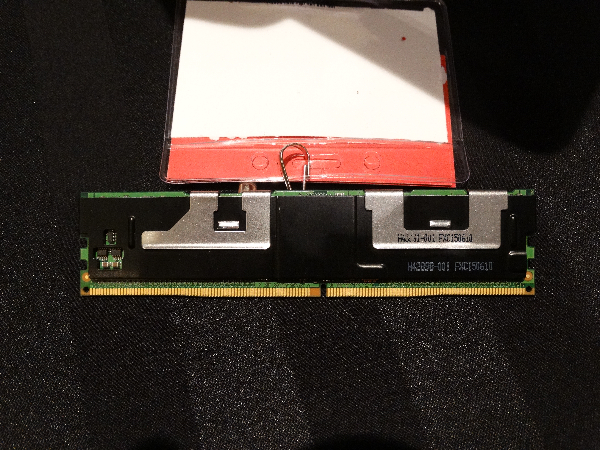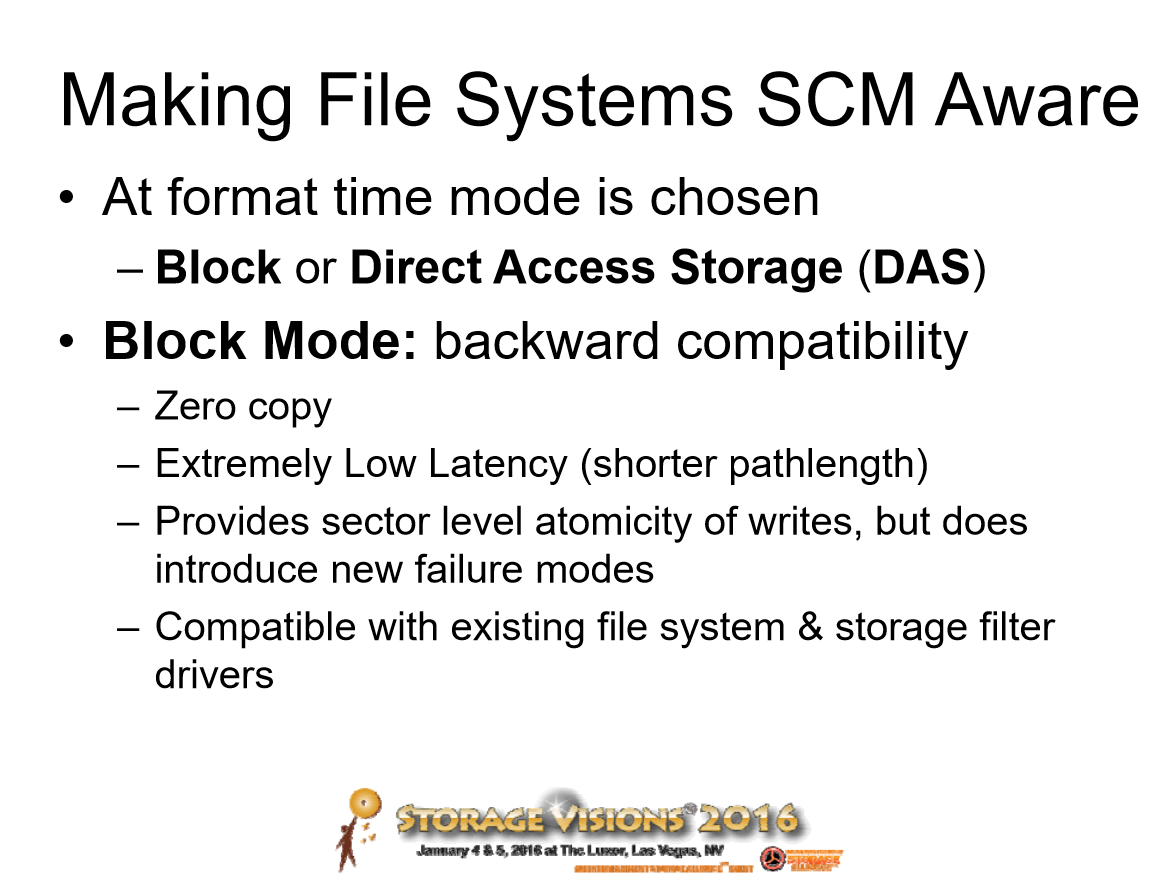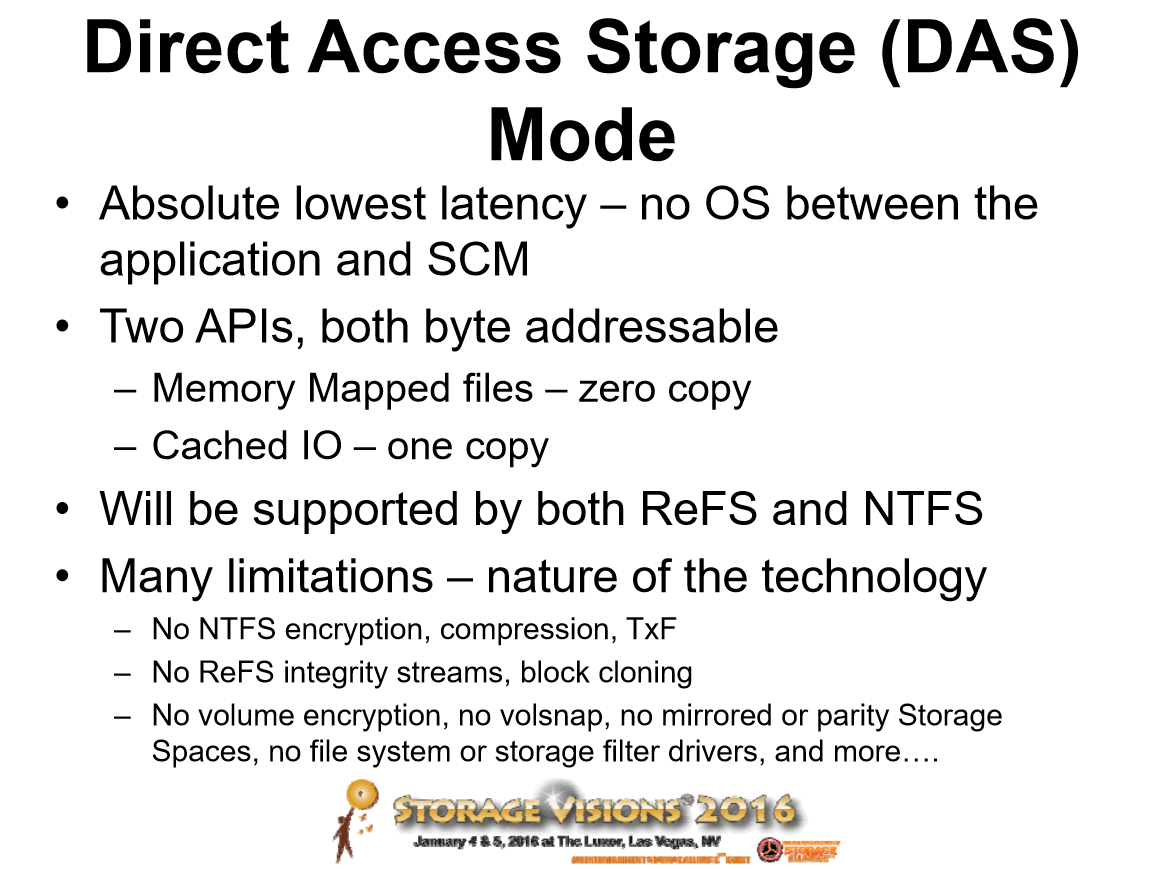Intel 3D XPoint, Pictured: Microsoft Joins The Party
Bev Crair, the Vice President and General Manager of the Storage Group at Intel, turned the information faucet on a little more at Storage Visions today. Information about 3D XPoint has been slow to emerge since Intel and Micron first announced it in 2015, which has fueled wild speculation. In the tech world, it's the equivalent to the predictions about the new Star Wars series, and a similar number of rumors abound.
To our knowledge, this is the first known close-up image of a working 3D XPoint device. We used a Storage Visions badge to prop the drive up for lighting purposes, and the metal clip extending from the middle of the DIMM is not part of the Intel NVDIMM.
The DIMM package is nearly identical to older FBDIMMs and even features a similar raised FPGA section in the middle of the heatsink. The FPGA is employed to orchestrate the internal NVDIMM functions, much like an SSD controller.
The 3D XPoint NVDIMM utilizes the DDR4 interface to communicate directly with the CPU. Intel stated today that the current maximum capacity per 3D XPoint NVDIMM is 512 GB, and dual-socket servers can address up to 6 TB total with two CPUs. The largest DDR4 modules weigh in at a mere 128 GB apiece. To put the 6 TB per-server density server into perspective: Windows Server 2012 R2 supports only 4 TB of memory.
The implications of the enhanced memory density for in-memory compute is nothing short of revolutionary. Intel also indicated that it continues to work on the NVMe Over Fabrics initiative, which will help servers blast data across the network at near-local performance.
From previous pictures of Intel/Micron's 3D XPoint, we know that the die size is likely very large, but we aren't sure of its density, which is a key consideration when calculating cost efficiency.
Intel has historically skirted defining the 3D XPoint performance specifications as well, choosing instead to leave us with generic answers such as "similar to 100x the performance of current generation NAND." That equates to roughly the performance of current DDR4 DRAM, and Intel reiterated again today that we should expect DRAM-like speeds.
Get Tom's Hardware's best news and in-depth reviews, straight to your inbox.
The FBDIMM-like package, with its FPGA in the middle, is very interesting and allows us to gain a little further insight. Intel used FBDIMMs on one mainstream Intel chipset generation, and it also employed the use of an FPGA in tandem with memory packages. The chipset spanned enterprise systems with two, four and even eight processors, but the most famous version also reached the market via Intel's Skulltrail enthusiast-class dual-socket system.
FBDIMMs ran very hot, and the FGPA controller could reach as high as 95 degrees Celsius for double refresh products. Unfortunately, that was the maximum "within spec" rating, which hampered adoption and eventually limited the use of FBDIMMs. Any serious enthusiast with a Skulltrail system knows this all too well, and may even still have the scars as a reminder.
Intel recently acquired Altera (for $16.7 billion), a semiconductor design-house that also recently announced an FPGA-based SSD controller.
Microsoft also detailed its role for enabling NVDIMM functionality, and thus 3D XPoint, in a panel today. Microsoft has an in-house build of Server 2016 with a new file system designed specifically to address new ultra-low latency NVDIMM devices. NVDIMMs are a range of Storage Class Memory (SCM) products that utilize the memory bus and DRAM, NAND, and now 3D XPoint to provide ultra-fast storage performance.
There are three classes of NVDIMM products, as outlined here. Microsoft is focusing on providing NVDIMM-N support at first, which is also the logical form factor for 3D XPoint NVDIMMs. Microsoft is designing ReFS and NTFS to be SCM-aware and feature latency optimizations that exploit the inherent advantages of storage-class memory. A Microsoft representative stated that the new system would first release to end users as an upcoming Technical Preview build.
Intel is still holding the details of its latest technology close, but some information is beginning to trickle out as the ecosystem develops and expands. There are reports that leading-edge samples are already in the hands of some Intel/Micron partners, but Intel is incredibly vague about general availability (as usual for anything 3D XPoint related), though it is predicted to be sometime this year.

Chris Ramseyer was a senior contributing editor for Tom's Hardware. He tested and reviewed consumer storage.
-
ZolaIII It will probably be the same story as with FPGA integrated Xeon's, that they will ship only to the biggest direct costumers like Google. This is bad for a computing generally & it's becoming a habit. To be honest I didn't expect much from the Intel but I am disappointed with silence from Micron from whom I expected a real effort on commercialization.Reply -
DrakeFS ReplyIt will probably be the same story as with FPGA integrated Xeon's, that they will ship only to the biggest direct costumers like Google. This is bad for a computing generally & it's becoming a habit. To be honest I didn't expect much from the Intel but I am disappointed with silence from Micron from whom I expected a real effort on commercialization.
If you go by the initial release info provided from Intel, Optane will be the branding of its consumer 3D Xpoint offerings. Supposedly we (consumers) will be seeing 3D Xpoint SSDs at some point (which I hope live up to the hype, 70k IOPs at a queue depth of 1 will be amazing for gaming machines). -
PaulyAlcorn I agree that as a block device (storage essentially) 3D XPoint will definitely be great for high-performance PC's, but I think that it is telling that all of the work to use the new memory as DRAM (byte-addressable) is in the server realm - they didn't mention any changes to Windows 10.Reply -
PaulyAlcorn ReplyAnd again, the single most important detail is missing - price per GB !
*shakes fist* (as well)
-
RamCity This is the most exciting development in storage tech (for me at least) since M.2 PCIe SSD's. So from a consumer perspective, if I understand this correctly, once 3D XPoint SSD's become a reality, Microsoft needs to add the SCM-awareness to NTFS/ReFS so that we can actually use the hardware in a system, plus motherboard manufacturers need to get on board and add NVDIMM sockets. Or will the NVDIMM's work in existing DDR4 sockets? (I couldn't figure that out from the other 3D XPoint article)Reply -
PaulyAlcorn The 3D XPoint products will come in two flavors - one will be a simple SSD, much like the 2.5" and M.2 we have today. It will work just as a normal SSD would - plug and play.Reply
The other flavor allows it to function as DRAM, or system memory. This type (shown in the article) of device (an NVDIMM) will require SCM awareness.
It appears from the direction things are going that using it as DRAM in a PC will not happen, it will likely only be for servers. However, good news for us, they will bring it out as regular storage devices to replace/supplement SSDs/HDDs. -
CRamseyer With the high cost per gigabit I see this technology used as a tier 0 cache for slower TLC-based SSDs. This would increase the endurance of low cost TLC and do a better job of masking native TLC write performance.Reply
I think the die will be expensive at first because Intel and Micron displayed a wafer at a launch event. I didn't break out a ruler or take exact measurements but the number of die per wafer was much lower than regular NAND flash.


